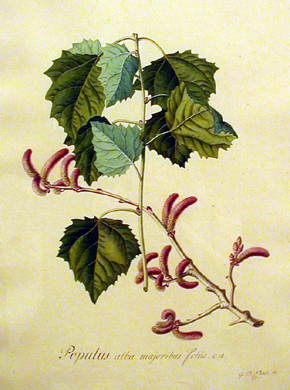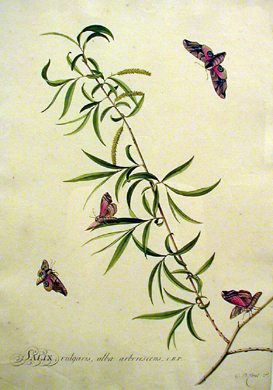| As Linnaeus worked through the literature written by himself and others, he cited his sources. Shown here are two pages from Species Plantarum with the abbreviations that Linnaeus used for the authors’ names highlighted. Links to portraits, biographical information and texts of these naturalists upon whose work Linnaeus’ efforts were built are listed below. For the original exhibition, we were unable to show some of the actual texts cited by Linnaeus on pages 356–357 of his Species Plantarum (1753) due to space constraints.
For more information on Linnaeus' system of references to earlier literature, we refer the reader to pages 3–9 of "An Appendix to the Species Plantarum of Carl Linnaeus," by John Lewis Heller and William Thomas Stearn, in Species Plantarum: A Facsimile of the First Edition 1753 (London, 1957–1959).
Albert Seba (1665–1736) [Seb.]
Leonard Plukenet (1641–1706) [Pluk.]
Joachim Camerer the Younger (1534–1598) [Cam.]
Gaspard Bauhin (1560–1624) [Bauh.]
Johann Bauhin (1541–1612) [Bauh.]
Matthias de L’Obel (1538–1616) [Lob.]
Albrecht von Haller (1708–1777) [Hall.]
John Ray (1628–1705) [Ray.]
Rembert Dodoens (1516–1585) [Dod.]
Joseph Pitton de Tournefort (1656–1708) [Tournef.]
Pietro Andrea Mattioli (1501–1577) [Matth.]
Charles de L’Ecluse (also Clusius, 1525–1609) [Clus.]
François Boissier de la Croix de Sauvages (1706–1767) [Sauv.]
A few more contemporaries who were featured in the exhibit but who are not cited in the two pages shown above:
Michel Adanson (1727–1806)
Antoine Laurent de Jussieu (1748–1836)
Georg Dionysius Ehret (1708–1770) met Linnaeus at the estate in Holland of their patron, the wealthy George Clifford (1685–1760). In an excerpt of his autobiography from Wilfrid Blunt’s The Compleat Naturalist: A Life of Linnaeus (New York, 1971, p. 107), Ehret recounts the meeting:
I showed him my work in the presence of Mr Linnaeus, than whom no one was more eager in the characters of plants. There were some quite new plans among them. Mr Clifford then asked me if I wished to sell them, and what my price was, took almost everything that I had with me, and paid me what I asked, namely 3 Dutch gulden a piece. He kept me more than a month at Haarlem; and in that time I completed all the figures which came out in the Hortus Cliffortianus — Collinsonia, Turnera, etc., which I had brought from England. I profited nothing from [Linnaeus] in the dissection of the plants; for all the plants in the Hortus Cliffortianus are of my own undertaking, and nothing was done by him in the way of placing all the parts before me as they are figured: for I had done all this, as the noble Dr. Trew knew, many years before I had ever heard of Mr Linnaeus ?
During the time I was with Mr Clifford I was treated courteously. I did not then know that Linnaeus intended to publish a Hortus Cliffortianus. Linnaeus and I were the best of friends: he showed me his new method of examining the stamens, which I easily understood, and privately resolved to bring out a Tabella of it. As my work with Mr Clifford was now coming to an end I returned to Leyden and published the plate ? With this Tabella I once more earned some money; for I sold it at 2 Dutch gulden a piece and almost all the botanists in Holland bought it of me.
|

sm.jpg)
sm.jpg)

